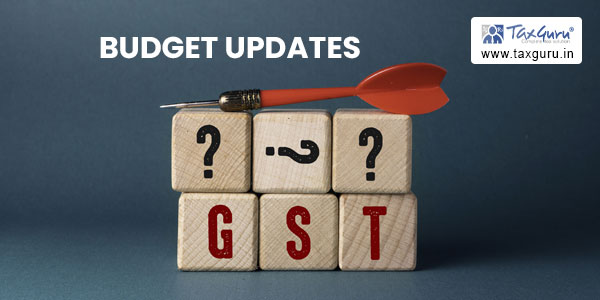
The financial sector in India is currently experiencing a golden age, and its biggest driver is the effort to move toward a less-cash economy. With reports suggesting that around 95% of all the transactions in the country were made using cash until very recently, it is a well-known fact that the life blood of the Indian economy has been cash. On November 8th, 2016, the Government of India announced its step to devalue specific currency denominations to battle corruption, terror financing and the numerous cash stockpiles of unaccounted for money. But, demonetisation had another effect – it created the greatest impetus for the transition from cash to digital transactions for the Indian economy.
That’s not to say, however, that the basis for this revolution was not successfully laid down beforehand. The foundation for a less-cash economy was set in the JAM (Jhan Dhan-Aadhaar-Mobile) trinity. The Pradhan Mantri Jan Dhan Yojana, which was initiated in August of 2014 as a tool for financial inclusion, has today managed to open over 22 crore bank accounts for citizens previously without one. Aadhaar, the world’s largest national identification number project, has covered over 99% of Indians aged 18 and above[1]. With Aadhaar helping in direct biometric identification for the less fortunate and Jan Dhan bank accounts and mobile phones allowing direct transfers of funds into their accounts, successive governments had put in place the foundational infrastructure for digital banking. The JAM trinity alone, however, wasn’t by itself adequate to make digital payments a preferred transaction mode. It took other technologies such as the Unified Payments Interface (UPI) and wallets, which in turn took the alternative modes of payment available post-demonetisation to gain recognition among the bulk of the nation’s populace. The government even offered two schemes to incentivise payments by digital means. The first, the Lucky Grahak Yojana, promised consumers daily and weekly prizes for simply making a transaction without cash. The Digi-Dhan Vyapari Yojana, offered prizes to merchants for engaging in cashless transactions.
In the past year, the government has made leaps in enabling the infrastructure to make digital payments not only a possibility for all Indians, but convenient too. The latest step that the government has taken in this direction is the introduction and spread of the BHIM platform, which has 2 manifestations:
Apps for the estimated 25 crore citizens with smartphones and internet access
*99# for the estimated 35 crore citizens who use feature phones or other phones without data
There is a third method to use BHIM — via AEPS (Aadhaar Enabled Payment Systems). This will come in handy for citizens without phones, a segment comprised of the remaining 35 crore Indians. Through apps and *99#, the BHIM platform currently caters to those with smartphones and internet access, as well as those with feature phones and without internet access to make seamless digital transactions.
The third segment of people, those without any phones, are often the rural, poor and socially disadvantaged and thereby the neediest for easy access to financial services. This is certainly the most difficult category of use cases to cater to, but to reach them with assisted banking we have AEPS. The proposed plan, is to assist the disenfranchised at specific locations of business correspondence (common service centers, self help groups, volunteer groups, kirana stores, etc.) to create a bank account (if they don’t already have one – likely) and deposit or withdraw money through Micro-ATMs (an AEPS tool). These Micro-ATMs can conduct an eKYC (Electronic Know Your Customer) using Aadhaar and open a bank account itself making them one-stop-shops for all banking needs. Soon, Aadhaar Pay (Aadhaar enabled Point of Sale devices, complete with fingerprint scanners) will be installed and enabled at retail touchpoints. These will allow for direct transactions from a customer’s Aadhaar-linked bank account to the retailer, requiring only the customer’s Aadhaar number and biometric data (fingerprint/iris scan) as authentication.
In the latest budget, a target of 2,500 crore digital transactions for 2017-18 through the BHIM platform (UPI, USSD, Aadhaar Pay), IMPS (Immediate Payment Service) and debit cards was set. Given, the foundational achievements of the country thus far, this is an achievable goal, especially since BHIM is poised to significantly increase its own reach and acceptance. The goal for the near future is, first, that all large merchants who have cash touchpoints (like Railways, Oil Marketing companies (LPG, Petrol & Diesel), Farming, Food, FMCG, etc.) should be encouraged to accept digital payments. Second, all businesses should be incentivized to pay employees and contractors in a digital manner. Third, micro and small retail payments will be brought into the net via an exponential increase in merchant acceptance points that take payments via BHIM.
Ultimately, India is on the cusp of being the world leader in fully accountable, transparent digital transactions; we have the political will, the appropriate regulatory environment and the digital infrastructure to get there!
[1] As of the 28th February 2017, according to the Unique Identification Authority of India.
(Nandan Nilekani is Chairman of the EkStep Foundation and Honorary Advisor to the National Payments Corporation of India. He was the Founding Chairman of the Unique Identification Authority of India and cofounder of Infosys. Nandan authored Imagining India and co-authored Rebooting India.)




















